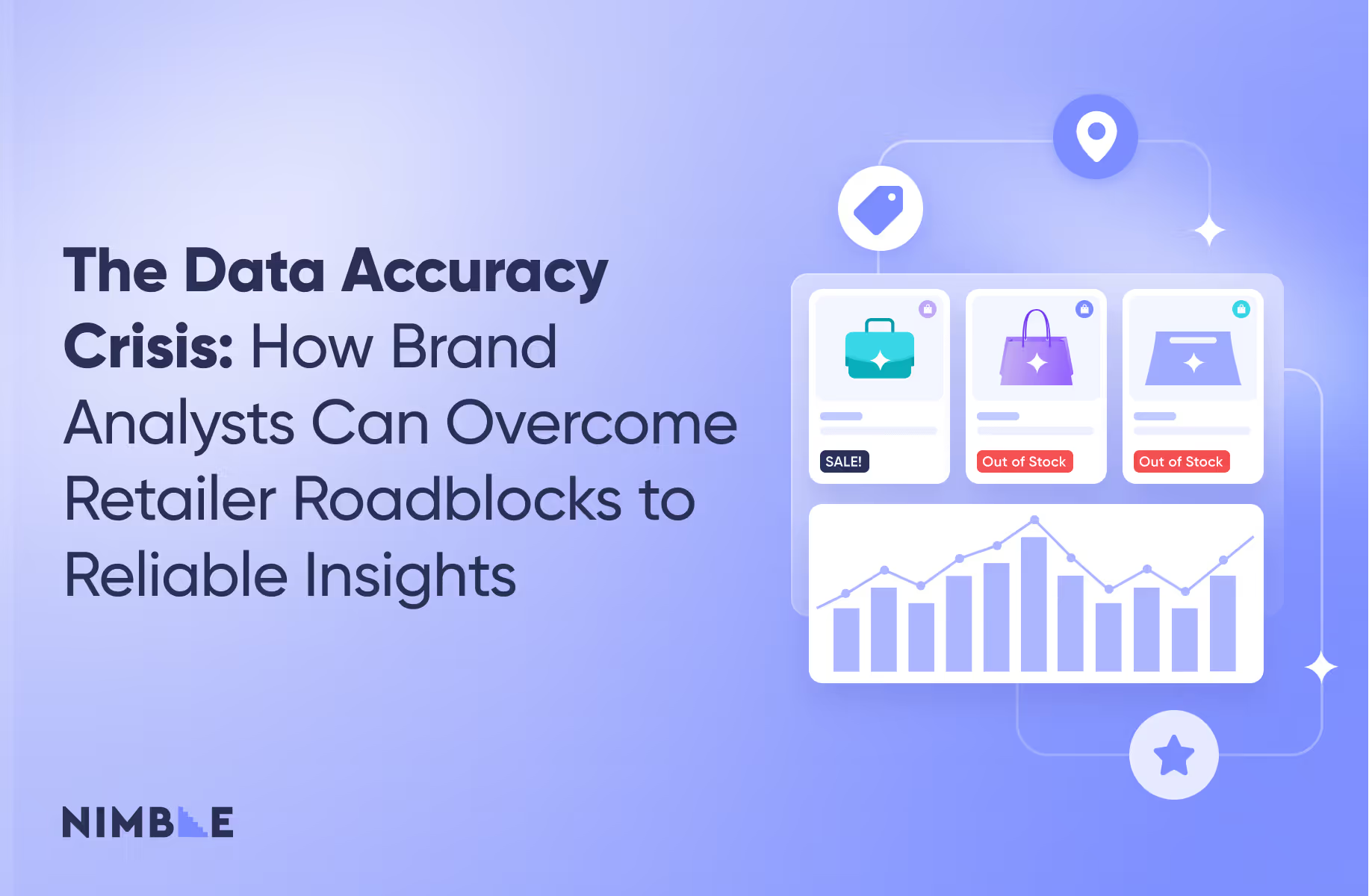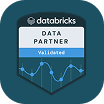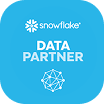What Is Alternative Data and How Can Retailers Use It?
Find out how retailers can use alternative data to predict trends, optimize pricing, and enhance customer experiences.


To stay competitive in the retail industry, businesses need more than just sales data and customer surveys. While traditional data sources like these are useful, they often only reflect past performance, making it difficult for retailers to anticipate upcoming trends and changes in consumer behavior. As the market constantly shifts, tapping into alternative data can provide valuable insights to help businesses adapt and stay ahead.
Alternative data, or alt data, is a powerful tool that allows retailers to gain deeper, real-time insights into consumer behavior, market trends, and competitive landscapes. Alternative data (non-traditional data) comes from unconventional sources like online search trends, social media activity, foot traffic patterns, and even satellite imagery.
This article examines the ways that retailers can use alternative data to proactively adjust their marketing strategies, optimize inventory, and enhance customer experiences. Here are some of the main points we’ll cover:
Key Takeaways
- Alternative data provides retailers with dynamic, predictive insights beyond traditional sales reports, helping them anticipate trends and consumer behavior shifts.
- By integrating sources like geolocation tracking, social media sentiment, and transactional data, retailers can enhance pricing strategies, inventory management, and customer experiences.
- Using alternative data responsibly requires compliance with data privacy laws, ethical data collection, and maintaining consumer trust.
Curious to learn how alternative data can reshape your retail strategy? Learn more here.
What is Alternative Data?
Alternative data refers to non-traditional data sources that provide unique insights into consumer behavior, market dynamics, and business performance. Unlike traditional data such as sales figures and survey responses, alternative data comes from sources like website traffic, geolocation patterns, credit card transactions, and even job postings.
Traditional Data vs. Alternative Data
Traditional data includes structured datasets like sales reports, customer feedback, and sales, operational, or customer information data from CRM databases. These are typically stored and managed in a traditional data center, offering a centralized infrastructure for processing and storing data. While these sources are reliable, they often lack the granularity and immediacy needed for real-time decision-making.
Alternative data, on the other hand, offers a broader and more dynamic perspective. For instance:
- Traditional Data: Sales reports show what sold last quarter.
- Alternative Data: Social media sentiment analysis predicts which products will be trending next month.
Retailers that leverage alternative data can anticipate consumer needs and market trends ahead of traditional reports. When combined with hybrid data management systems like data lakehouses, alternative data allows businesses to merge the structure and reliability of established data sources with the flexibility and scalability of emerging data streams. This combination supports more proactive, data-driven decision-making, giving retailers a competitive edge.
What is an Alternative Data Provider?
An alternative data provider is a company or service that collects, curates, and distributes non-traditional data sources to help businesses gain insights into various market trends and consumer behavior. Alt data providers specialize in offering data that go beyond typical market research and static data reports, including data from:
- Satellite imagery
- Geolocation data
- Social media sentiment
- Web scraping
For example, alt data providers in the financial sector might offer data on:
- Credit card transactions
- Social media trends
- Weather patterns that could impact stock prices
Types of Alternative Data That Retailers Can Use
Consumer Behavior Data
Consumer behavior data encompasses a wide range of digital interactions, including online searches, social media engagement, website visits, and purchase intent signals.
By analyzing these sources, retailers can:
- Identify trending products before they peak.
- Personalize marketing campaigns based on browsing habits.
- Optimize product recommendations for customers.
For example, a fashion retailer might use social media analytics to spot rising trends, enabling them to stock up on in-demand items before competitors catch on.
Types of consumer behavior data include:
- Abandon cart rates from internal e-commerce websites, providing insights into purchase intent.
- Likes and follows from brand social media pages indicate customer interest and engagement.
- Search queries on product-related keywords, identifying popular products and emerging trends.
- Click-through rates (CTR) from email campaigns help assess the effectiveness of promotional content.
With these data sources, retailers can better understand customer preferences and optimize their strategies accordingly.
E-commerce Data & Analytics
E-commerce is a fast-moving space where pricing, product availability, and consumer demand shift constantly. Retailers need real-time insights to stay competitive and adapt to market changes.
Key alternative data sources that power e-commerce analytics include:
- Competitor websites for tracking pricing, promotions, and stock availability.
- Search engine results to monitor product rankings and visibility.
- Consumer review platforms to analyze sentiment and emerging trends.
- Social media activity to gauge brand perception and product discussions.
By leveraging these data sources, retailers can identify pricing gaps, anticipate demand shifts, and optimize their product offerings.
Tools like Nimble’s Online Pipelines streamline and automate data collection for real-time e-commerce insights.
Book a demo today to see how Nimbleway can optimize your data strategy.
Geospatial & Foot Traffic Data
The physical location of a retail store plays a crucial role in its success. But foot traffic patterns and in-store engagement levels are difficult to quantify using traditional data sources alone. Alternative data sources like geolocation tracking and in-store sensors offer retailers a more detailed view of customer behavior in physical spaces.
Retailers can use geolocation data to:
- Optimize store locations by identifying high-traffic areas with strong consumer demand.
- Analyze movement patterns within stores to improve store layouts and maximize sales opportunities.
- Enhance in-store experiences with real-time promotions by sending personalized offers to shoppers based on their location within a store.
These geolocation insights can help retailers select the best spot for a store and improve the customer experience within each site.
Types of geospatial and foot traffic data include:
- Foot traffic data from geolocation tracking to assess popular shopping areas.
- In-store movement patterns are captured via sensors or mobile apps to optimize store layouts and sales flows.
- Real-time location-based offers sent to customers via apps or push notifications based on their in-store behavior.
- Geolocation insights from apps like Google Maps or Foursquare to determine optimal store placement.
Financial & Transactional Data
Knowing how and where consumers are spending money is vital business intelligence for retailers. By analyzing financial and transactional data, they can gain a clearer picture of their market.
Retailers can leverage financial and transactional data sources such as:
- Credit card purchases to track spending patterns and identify popular product categories.
- Online payment trends to assess shifts in consumer purchasing behavior, such as increased use of digital wallets.
- Stock market behaviors impacting retail to anticipate potential changes in consumer spending habits based on economic indicators.
Understanding these financial patterns allows businesses to adjust pricing, inventory levels, and promotional strategies in response to broader economic trends.
Types of financial and transactional data include:
- Credit card transaction data from banks and payment processors to understand spending trends.
- Digital wallet activity from platforms like PayPal or Apple Pay to track shifts in payment preferences.
- Economic data such as consumer confidence indices or retail sales reports to predict market trends.
- Point-of-sale data from e-commerce or physical stores to monitor product purchase rates and consumer demand.
For example, if credit card data shows increased spending on luxury goods, a retailer might expand its premium product lines to capitalize on high consumer confidence.
Alternative Market Signals
In addition to traditional and digital market signals, retailers can gain additional insights from unconventional indicators that provide early warnings of market shifts and business trends. These alternative market signals can help retailers anticipate demand, identify new opportunities, and mitigate potential risks before they become widespread issues.
Types of alternative market signals include:
- Job posting data from platforms like LinkedIn and Indeed to identify trends in hiring and business expansion.
- Supplier and logistics data to track material shortages, production delays, or potential disruptions in the supply chain.
- Satellite imagery for tracking parking lot foot traffic, global trade activity, and inventory levels at warehouses.
- Patent filings to monitor innovations or new products that may disrupt the market.
For example, companies tracking satellite images of retail parking lots can gauge foot traffic trends before earnings reports are released. This predictive insight helps investors and businesses anticipate revenue trends and adjust their strategies accordingly.

How Retailers Can Leverage Alternative Data for a Competitive Edge
Retailers can use alternative data to:
- Implement Dynamic Pricing: Leverage alternative data to refine pricing strategies by analyzing real-time market signals. Use web scraping to track competitor pricing, consumer sentiment analysis to gauge demand fluctuations, and supply chain data to anticipate cost changes.
- Forecast Trends: Predict product demand based on online search patterns, social media buzz, or even news events, allowing retailers to stay ahead of shifting consumer preferences.
- Improve Customer Segmentation: Use behavioral data, including online browsing and purchase history, to create more accurate customer profiles and target promotions more effectively, leading to higher engagement and conversion rates.
- Optimize Supply Chains: Anticipate inventory needs based on alternative market signals, such as economic trends, shipping patterns, or social sentiment, reducing stockouts and overstock issues.
For example, a retailer analyzing weather patterns may stock up on rain gear in anticipation of upcoming storms, boosting sales and improving inventory management. This proactive approach can be applied to various product categories, making it easier for retailers to respond to external factors that influence demand.
Ready to see how alternative data can transform your strategy? Contact Sales to get started.
Challenges and Ethical Considerations in Using Alternative Data
While alternative data offers retailers powerful insights, responsible usage requires careful consideration of legal, ethical, and accuracy-related challenges. Here are the key factors to address:
Data Privacy
- Follow Legal & Website Policies: Ensure compliance with GDPR, CCPA, and other regulations. Respect robots.txt directives and website terms of service when collecting data.
- Secure & Responsible Data Handling: Implement encryption, anonymization, and secure storage to protect consumer information and prevent unauthorized access.
Consent & Transparency
- Clear Disclosure: When collecting user-generated data, be transparent about its use and provide opt-out options where applicable.
- Ethical Scraping Practices: Avoid scraping personally identifiable or sensitive information, and ensure data usage aligns with ethical guidelines.
Data Accuracy & Reliability
- Validate & Clean Data: Use parsing and deduplication techniques to filter out irrelevant or misleading information. Cross-check with authoritative sources when possible.
- Optimize Collection Workflows: Structure data pipelines for real-time updates and error detection to maintain consistency and reliability.
Is All Data Fair Game?
Not all data is fair game—retailers must assess the ethical, legal, and reputational risks of their sources. Avoid:
- Private or Personal Data: Scraping login-protected sites, personal messages, or sensitive consumer information (e.g., medical records, banking details) without explicit consent.
- Data from Unauthorized Sources: Using leaked datasets, dark web sources, or breached databases, which can lead to legal and reputational damage.
- Non-Compliant Website Scraping: Ignoring robots.txt directives, scraping sites with explicit anti-scraping policies, or violating terms of service agreements.
Instead, focus on publicly available, legally accessible data from sources like search engine results, brand websites, government databases, and properly consented social media insights.
By balancing the power of alternative data with a strong commitment to privacy, ethics, and data accuracy, retailers can successfully navigate these challenges and use alternative data to its full potential without compromising consumer trust or legal compliance.
Nimble is built with compliance at its core, ensuring that data collection adheres to industry regulations and best practices. With Nimble’s Online Pipelines, retailers can seamlessly gather and process high-quality public data at scale—efficiently, ethically, and with full compliance.
Get started today and unlock the power of alternative data with confidence.
Tools and Strategies for Getting Started with Alt Data
Alternative data presents a powerful opportunity for retailers to gain an edge in an increasingly competitive environment. But it takes a clear strategy and the right tools to collect, analyze, and leverage it efficiently.
Here are key steps retailers can take to successfully integrate alternative data into their operations.
1. Choosing the Right Sources
When selecting sources for alternative data, retailers should consider a diverse range of publicly available platforms that provide valuable insights into market trends, consumer behavior, and competitive landscapes.
- Social Media Platforms: Sites like Twitter, Reddit, and Instagram offer real-time discussions and sentiment analysis that can reveal emerging trends and shifts in consumer preferences.
- Brand Websites and E-Commerce Platforms: Monitoring official brand pages and online marketplaces like Amazon or Shopify helps track pricing changes, product availability, and customer reviews.
- Search Engine Results Pages (SERPs): Scraping search results can provide insights into consumer search intent, trending topics, and competitor positioning.
- Weather Databases: Weather patterns can influence purchasing behavior, making sources like NOAA or AccuWeather valuable for retailers looking to anticipate seasonal demand.
- Financial and Economic Reports: Public filings, government reports, and open financial data sources can help retailers understand broader economic conditions and spending trends.
By leveraging these sources, retailers can build a comprehensive data strategy that supports market analysis, demand forecasting, and competitive intelligence.
2. Leveraging APIs
APIs provide an efficient and scalable way to pull data from various sources and feed it into your analytics tools and business systems.
Nimble’s Web API enables universal scraping of any public website, allowing retailers to generate alternative data from a wide array of sources. With Nimble’s platform, retailers can access geolocation data, financial data, web scraping results, and social media insights—all through a single interface.
With APIs, retailers can easily bring alternative data into their analytics and customer relationship management systems, allowing for real-time decision-making and reducing the time spent manually gathering data.
3. Choosing Effective Data Analytics Tools
Once they identify the right sources, retailers need analytics tools to interpret and make sense of the data. These include:
- Business intelligence tools like Tableau, Power BI, and Google Analytics. These tools allow retailers to create visual reports, identify patterns, and track key performance indicators (KPIs).
- AI and Machine Learning models can use alternative data to predict future consumer behavior or forecast demand.
- Sentiment analysis tools based on natural language processing (NLP) can analyze consumer feedback at scale.
4. Scaling Up
Once you’ve successfully integrated alternative data into your business, it’s time to scale up your efforts. Retailers can begin by using small, targeted datasets and gradually expand as they refine their strategies and better understand how to utilize the data effectively.
- Start with pilot projects: Begin with a pilot project to test the impact of alternative data on a specific area of your business, such as pricing, product recommendations, or marketing strategies.
- Refine data-driven strategies: Keep fine-tuning to ensure that you are addressing the most relevant customer pain points or market opportunities.
- Expand data usage gradually: As you gain confidence in your ability to analyze alternative data, start incorporating additional sources and tools to further enhance your decision-making processes.
Nimbleway’s Optimization Engine is a built-in feature of our Pipelines and Web API, enhancing data retrieval by reducing downtime and ensuring reliable access to high-quality alternative data at scale.
Conclusion: The Future of Retail with Alternative Data
Alternative data is no longer an experimental resource. It’s becoming essential for modern retail strategies. Brands that leverage alternative data will be better positioned to:
- Anticipate market trends.
- Optimize pricing strategies.
- Enhance customer experiences.
As technology evolves, alternative data sources will continue to expand, offering even deeper insights into consumer behavior. Retailers that embrace these insights today will lead the industry tomorrow.
Want to stay ahead? Explore how alternative data can power your retail strategy today.
FAQ
Answers to frequently asked questions


.avif)











